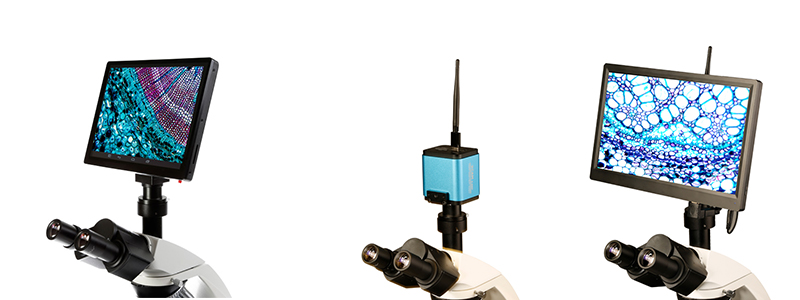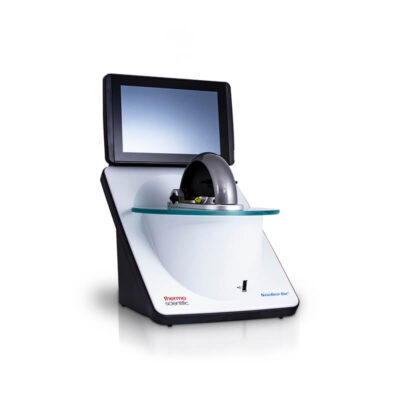Before we start, if you’re in the market for inverted microscopes, you’ll find our full range here
Inverted microscopes are similar to compound microscopes except that their components are placed in inverted order: The light source and condenser are positioned above the specimen and the specimen is viewed from below. In this configuration, light is directed down onto the stage/specimen and it is possible to view specimens in larger laboratory containers, such as flasks and Petri dishes. Specimens can be viewed through the lens or on a screen, when using an accessory microscope camera.
What are inverted microscopes used for?
Inverted microscopes are used for observing cells and organisms in culture, in Petri dishes, flasks, microplates, and roller bottles. They are equipped with brightfield and often phase contrast, which allows unstained transparent tissue to be observed more clearly. Fluorescence observation can also be added for a wide range of fluorescence dyes.
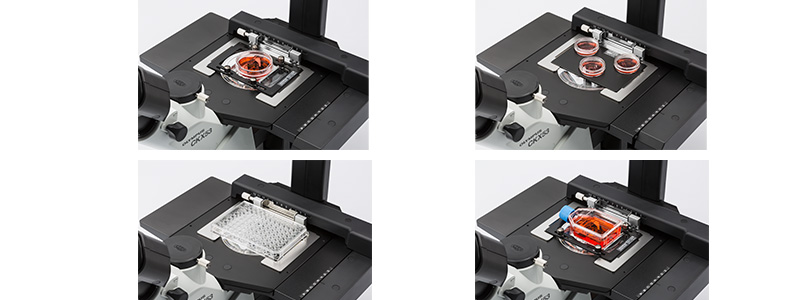
Lower cost models are often referred to as tissue culture microscopes or cell culture microscopes because they are frequently used in tissue culture suites.
Life science and clinical applications include:
- Live cell observations
- Cell screening
- Cell sampling and handling
Inverted Microscopes available from Medline Scientific
Along with our very own Ceti microscopes, we partner to Evident Olympus who are a leading manufacturer of optical and digital microscopes for science, medicine, and industry. We’re happy to organise microscope demonstrations, so please contact us for more information.
Olympus CKX53 Inverted Microscopes
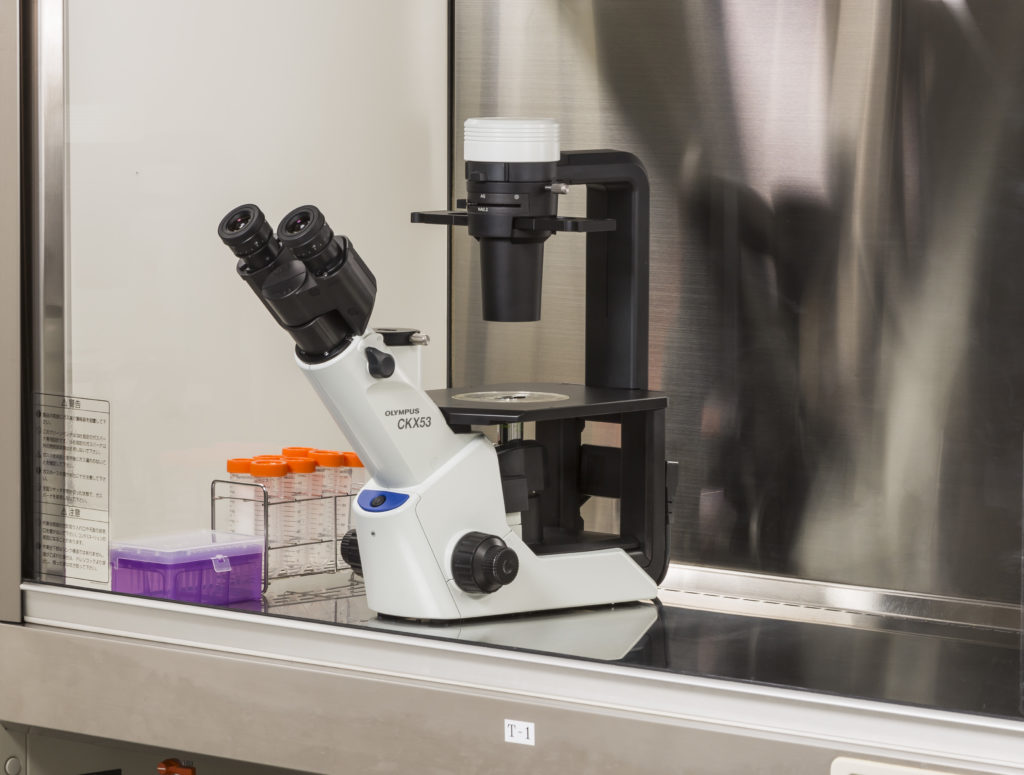
Image supplied by Evident Olympus
The Olympus CKX53 is suitable for a variety of cell culture applications including: Live cell observation, cell sampling and handling, image capture, and fluorescence observation (with fluorescence set). The Integrated Phase Contrast (iPC) system provides high contrast for clear view of cells at 4X, 10X, 20X and 40X without exchanging or re-centring the ring slit.
Its small footprint and UV-resistant coating make the CKX53 suitable for use on a clean bench (such as a laminar flow cabinet) so it can be used for live cell observations under sterile conditions.
- Compact and UV-resistant coating—ideal for use in sterile environments
- Ergonomic design—comfortable workflow
- iPC system—simple and efficient cell observations
- Universal holder—accommodates a wide variety of containers, including multi-layer tissue flasks
- Available with inversion contrast (IVC)—clear 3D views
- Camera port—enables connection to optional digital camera
Visit the product page to find out more.
Ceti Inverso TC-100 Inverted Microscopes
The Ceti Inverso TC-100 microscope is suitable for many observation techniques and is a popular choice in medical and research institutes for life science applications. This microscope features super widefield eyepieces (10X, FN22), a quintuple position nose-piece, and adjustable LED illumination.
- Robust—built to withstand constant daily use
- Phase contrast slider—with two phase rings
- LWD Plan Achromatic objectives—three phase contrast (10X, 20X, 40X), plus two brightfield objectives (4X and 40X)
- Available with fluorescence—with power supply
- Camera port—for connection to optional digital camera
The two most popular configurations of the Ceti Inverso TC-100 microscope are listed below. Alternatively, please browse our full range of inverted microscopes.
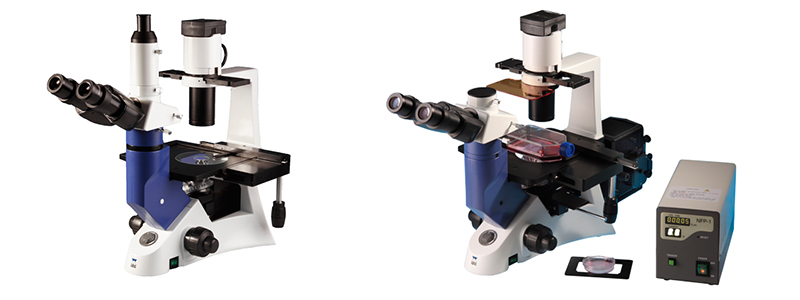
3660.5000LED Ceti Inverso TC-100 Inverted Microscope LED Illumination
3660.8000M Ceti Inverso TC-100 LED Inverted Biological Microscope, with Fluorescence
Microscope Demonstrations
If you would like to discuss your application or request a microscope demo, please get in touch: enquiries@medlinescientific.co.uk or via our contact form.
Microscope Cameras
We can supply Olympus and Ceti digital microscope cameras and tablet cameras for use with inverted microscopes for image viewing, sharing, and capture.
